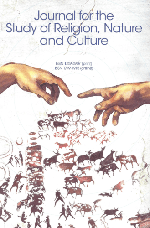Eco-Alchemy by Dan McKanan
We are excited to share another recent publication from ISSRNC member Dan McKanan titled Eco-Alchemy: Anthroposophy and the History and Future of Environmentalism from the University of California Press. McKanan is the Ralph Emerson Unitarian Universalist Association Senior Lecturer in Divinity at Harvard Divinity School. The following book description is provided by the publisher.
 For nearly a century, the worldwide anthroposophical movement has been a catalyst for environmental activism, helping to bring to life many modern ecological practices such as organic farming, community-supported agriculture, and green banking. Yet the spiritual practice of anthroposophy remains unknown to most environmentalists. A historical and ethnographic study of the environmental movement, Eco-Alchemy uncovers for the first time the profound influences of anthroposophy and its founder, Rudolf Steiner, whose holistic worldview, rooted in esoteric spirituality, inspired the movement. Dan McKanan shows that environmentalism is itself a complex ecosystem and that it would not be as diverse or as transformative without the contributions of anthroposophy.
For nearly a century, the worldwide anthroposophical movement has been a catalyst for environmental activism, helping to bring to life many modern ecological practices such as organic farming, community-supported agriculture, and green banking. Yet the spiritual practice of anthroposophy remains unknown to most environmentalists. A historical and ethnographic study of the environmental movement, Eco-Alchemy uncovers for the first time the profound influences of anthroposophy and its founder, Rudolf Steiner, whose holistic worldview, rooted in esoteric spirituality, inspired the movement. Dan McKanan shows that environmentalism is itself a complex ecosystem and that it would not be as diverse or as transformative without the contributions of anthroposophy.
Writing in the Introduction to his book, McKanan argues:
Today’s environmental movement is a vast ecosystem that includes farmers and teachers, monkey-wrenching activists and pragmatic politicians, pagans and Protestants, toddlers playing on the beach and elders planning a green burial. All are united by an awareness that their individual destinies are caught up with the health of natural systems at the local, global, and cosmic levels. Human beings have always evolved in symbiosis with wheat and cattle and intestinal bacteria; environmentalists are human beings who are becoming conscious of our interdependence. This consciousness is changing what we eat, how we treat plants and animals, where we live, and how we travel. Environmental consciousness is also changing our culture: the stories we tell, the ways we teach and learn, our outer rituals and innermost beliefs.
You can read the rest of the Introduction here. More information about the book is available from the publisher here.












